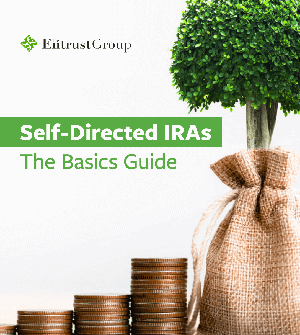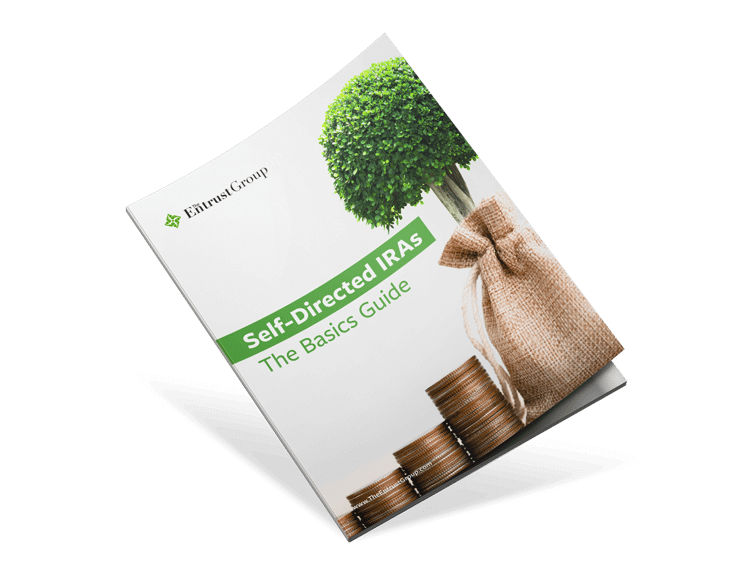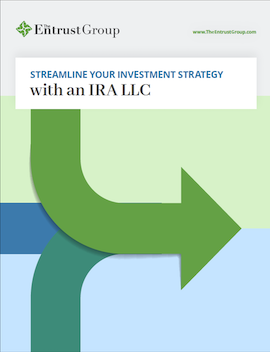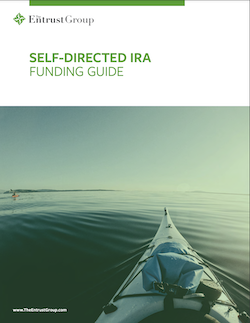How to Invest in Real Estate Syndications with Your Retirement Funds

Estimated Reading Time: 5 minutes
If you’ve ever dreamed of investing in a 200-unit apartment complex, a self-storage facility, or a commercial building, but don’t have millions sitting idle, real estate syndications might be your ticket in.
A real estate syndication is simply a way for multiple investors to pool capital to purchase and manage a property that would be difficult to acquire individually. It’s a form of teamwork investing: one party finds and manages the deal (the sponsor), while others provide capital (the limited partners). In return, all parties share in the profits based on their ownership stake.
In this article, we’ll explore the fundamentals of real estate syndications, including key players, requirements, potential benefits, drawbacks, and more.
Table of Contents
- Definition and Key Players
- Are There Requirements to Invest in a Real Estate Syndication?
- Types of Real Estate Syndications
- Benefits and Drawbacks of Real Estate Syndications
- Finding and Evaluating Syndication Opportunities
- Conducting Due Diligence: Trust but Verify
- Analyzing the Deal: Numbers, Structure, and Risks
- Investing in Real Estate Syndications with Your IRA
Definition and Key Players
Every syndication typically includes three key components:
- The Sponsor (or General Partner): The sponsor is the engine behind the deal. They identify the property, negotiate the purchase, secure financing, and oversee all management decisions. Sponsors usually contribute some capital and receive a share of the profits in exchange for their expertise and oversight.
- The Investors (or Limited Partners): These are the passive investors who provide the majority of the capital. They don’t manage day-to-day operations but receive regular income distributions and potential profits from appreciation when the property is sold.
- The Entity (LLC or LP): The property is usually owned through a legal entity, such as a limited liability company (LLC) or limited partnership (LP). Each investor owns a proportional interest in that entity, not the property directly.
Example of Real Estate Syndication Investment
A sponsor identifies a $10 million apartment complex. They raise $3 million from investors, secure a $7 million loan, and manage the property. Each investor receives monthly or quarterly income (rental profits) and a share of appreciation when the property is sold, all without the headaches of being a landlord.
Are There Requirements to Invest in a Real Estate Syndication?
While the specific requirements depend on the type of syndication, most offerings have minimum investment thresholds and investor eligibility rules set by the U.S. Securities and Exchange Commission (SEC).
Here’s what to know:
Accreditation Requirements
Most real estate syndications are offered under SEC Regulation D which limits participation to accredited investors, or individuals who meet either of the following:
- Have a net worth over $1 million, excluding their primary home, or
- Earn at least $200,000 annually ($300,000 with a spouse) for the past two years and expect to maintain that income.
Minimum Investment Amount
Most syndications have a minimum investment, typically ranging from $25,000 to $100,000. This amount varies based on the project’s size, sponsor, and structure.
Types of Real Estate Syndications
Not all real estate syndications are the same.
While their legal structure (LLC, LP, etc.) determines how they operate, the type of syndication determines how you make money and what level of risk you’re taking.
Most deals fall into three main categories:
Debt Syndications
In a debt syndication, investors act as lenders rather than owners.
They collectively fund a loan to a real estate project, and the borrower (often a developer or operator) repays it with interest over time.
Investor returns are fixed, typically a set annual interest rate (e.g., 8%–12%). You do not own the property, and your return doesn’t depend on appreciation or rents, only on interest payments. You may hold a secured position (with a lien on the property) or an unsecured position, depending on the deal.
Pros:
- Lower volatility, predictable interest income
- Shorter investment term (often 12–36 months)
- First in line to be repaid if the project fails
Cons:
- No upside from property appreciation
- Returns capped at the stated interest rate
- Still carries borrower and default risk
Equity Syndications
In equity syndications, investors become owners in the property or project. They share in both ongoing income (like rent or profit distributions) and long-term appreciation when the asset sells.
Investor returns are variable, dependent on property performance. The investor is a limited partner or member in the entity that owns the property. Your returns come from cash flow and capital gains.
Common structures include:
- Preferred return: Investors receive, say, the first 8% of profits before the sponsor takes any.
- Profit split: After the preferred return, profits might be split 70/30 between investors and sponsor.
Pros:
- Higher potential total returns (cash flow + appreciation)
- Inflation protection: real assets often rise in value
- Passive ownership: no direct management responsibilities
Cons:
- No guaranteed returns
- Funds often locked up for 3–10 years
- Market and operational risk tied to property performance
Hybrid (Debt + Equity) Syndications
Also known as mezzanine or structured equity deals, hybrid syndications combine elements of both debt and equity. Investors might receive fixed interest payments during the project’s life, plus a share of profits upon sale or refinancing.
For example, you invest $100,000 in a hybrid syndicate that pays 8% interest annually plus a 10% share of profits when the property sells.
Pros:
- More balanced risk/return profile
- Some income stability plus upside potential
Cons:
- Can be complex with multiple classes of investors
- Requires careful review of the offering memorandum
Benefits and Drawbacks of Real Estate Syndications
Like any investment, real estate syndications have both advantages and trade-offs.
Potential Benefits:
- Access to larger deals: You gain exposure to commercial and multifamily properties typically reserved for institutional investors.
- Diversification: Instead of buying one property outright, you can spread your retirement funds across multiple projects.
- Passive income: You share in the rental income and appreciation without having to manage tenants or maintenance.
Potential Drawbacks:
- Less control: Sponsors make the operational decisions, not you.
- Illiquidity: Syndications are long-term investments (typically 3–7 years) with limited options for early exit.
- Complexity: Understanding deal structures, fees, and tax documents (like K-1s) takes time and diligence.
Finding and Evaluating Syndication Opportunities
Once you understand what real estate syndications are and how SDIRA investors participate, the next step is knowing how to find credible opportunities, and how to separate strong sponsors from risky ones.
Because syndications often require long-term commitments and limited liquidity, careful due diligence upfront can make all the difference between a steady income stream and a costly mistake.
Sourcing Deals: Where to Find Syndications
High-quality syndications rarely advertise like typical investment products. They tend to circulate within professional and investor networks.
Here’s where investors often find legitimate opportunities:
- Referral networks: Word-of-mouth remains one of the most reliable sources. Investors often find sponsors through trusted peers, financial advisors, or local real estate groups.
- Accredited investor platforms: Online platforms like CrowdStreet or EquityMultiple provide access to vetted syndications. These typically require accreditation and offer detailed due diligence data.
- Local market operators: For investors focused on community impact, regional sponsors specializing in multifamily, retail, or industrial assets may offer accessible entry points.
Conducting Due Diligence: Trust but Verify
The most critical step in evaluating any syndication involves not just the property, but the sponsor. You’re trusting this individual or team to manage your investment for years.
Here’s what to review before committing:
- Track record: How many projects has the sponsor completed? Were they profitable? How do their projected returns compare to actual performance?
- Transparency and communication: Reputable sponsors are willing to answer detailed questions about deal structure, fees, and assumptions. If they deflect or pressure you to decide quickly, consider it a red flag.
- Alignment of interests: Look for sponsors who co-invest their own capital in the deal (“skin in the game”). This aligns their incentives with yours.
- Legal documentation: Review the Private Placement Memorandum (PPM) carefully. It should clearly outline the investment’s risks, exit strategy, and management fees. When in doubt, have your CPA or legal advisor review it.
Analyzing the Deal: Numbers, Structure, and Risks
Even with a trustworthy sponsor, investors must understand the deal itself. A strong offering balances realistic assumptions, risk-adjusted returns, and solid fundamentals.
Here are a few key factors to evaluate:
- Property type and market: Is the asset in a growing region with job and population growth, or in a stagnant area?
- Projected returns: Common benchmarks include:
- Cash-on-cash return: Annual income divided by invested capital (often 6–9%).
- Internal Rate of Return (IRR): Long-term return accounting for timing of cash flows.
- Equity multiple: Total return over time.
- Risk profile: Core deals offer steady income with lower upside. Value-add or opportunistic deals involve renovations or repositioning and carry higher risk but greater potential returns.
- Exit strategy: How long is the investment period? What triggers a sale or refinance? Are distributions quarterly, semiannual, or at project completion?
Investing in Real Estate Syndications with Your IRA
Real estate syndications offer investors a powerful way to access larger, professionally managed properties, without having to buy and manage real estate on their own. By pooling funds with other investors, you can unlock new levels of diversification, passive income, and potential long-term growth.
All three qualities that people are seeking in their retirement portfolio. Fortunately, it’s possible to invest in real estate syndications using your retirement funds.
All you need is a self-directed IRA (SDIRA).
An SDIRA allows you to invest your existing 401(k) or IRA funds in any asset the IRS allows, including real estate syndications.
Sounds like it might be up your alley?
Download our free SDIRA Basics Guide to learn how to diversify your portfolio and invest confidently in real estate syndications.






























0 Comment